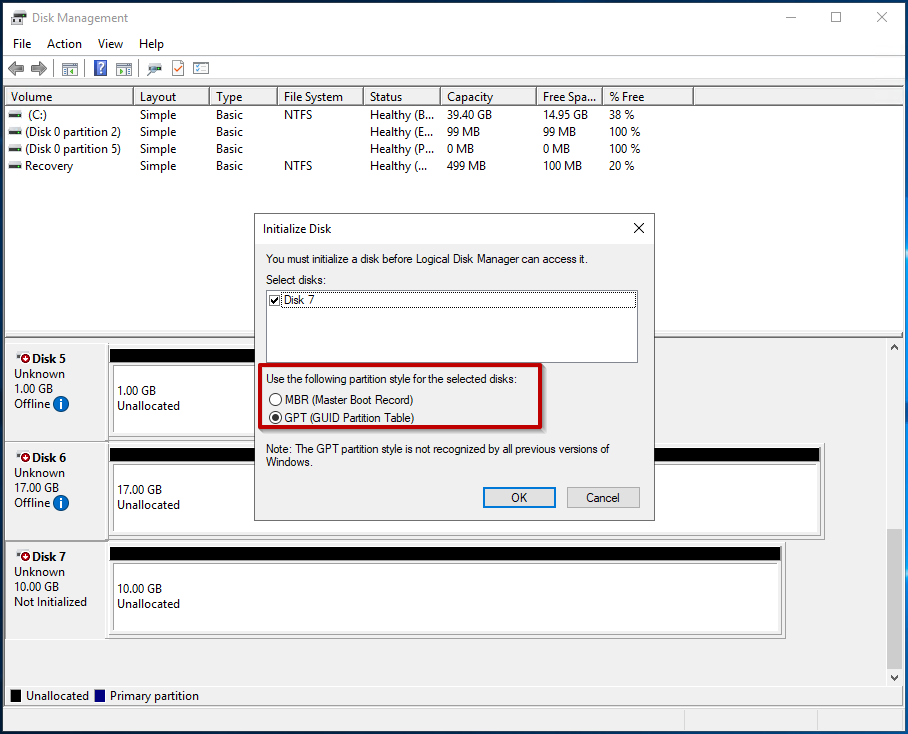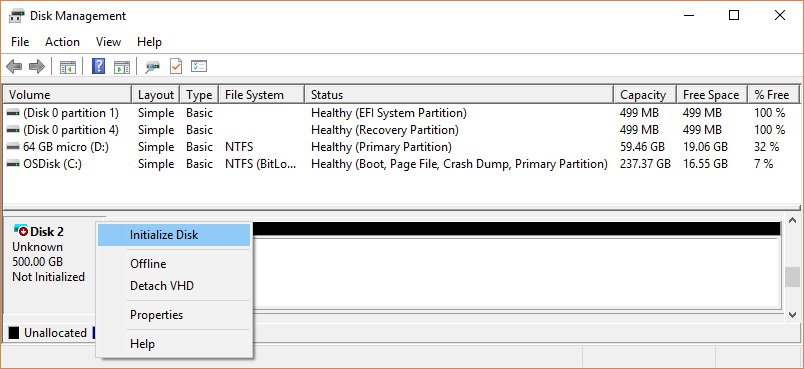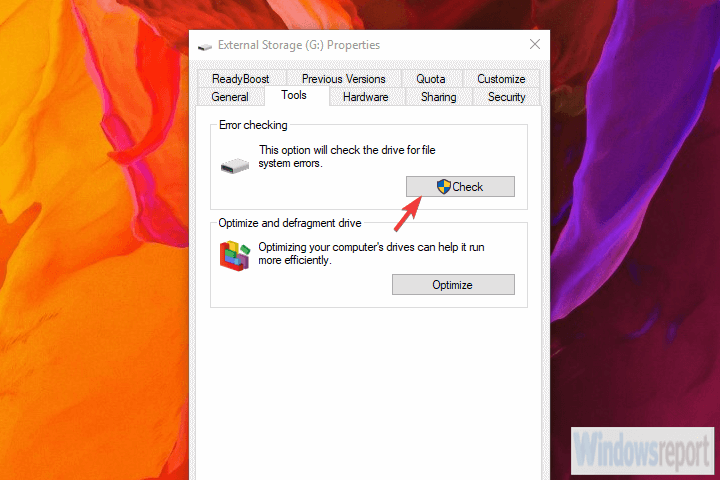
If you are prompted to initialize the drive, click Initialize. Mac OSX detects a drive that needs to be initialized and automatically prompts you to initialize the drive. The partition uses a file system (for example, HFS+, ex-FAT, NTFS, and so on). A partition defines an area of the drive to use for storing data. Mac OSīefore you can access a new or formatted drive in your operating system, you need to initialize it first and then create a partition on the drive. The new drive should appear in Windows Explorer.


When prompted to, initialize your disk(s). Press the Windows key + R, type compmgmt.msc, and click Run to open Computer Management. If you cannot find an uninitialized drive in Disk Management, skip the following steps and try to partition your device. Note: You typically only need to initialize a drive if the drive is new. The partition uses a file system (for example, ex-FAT, NTFS, and so on). You may need to restart your machine for the change to take effect, but once you do the drive will use the new letter.Before you can access a new or formatted drive in your operating system, you need to initialize it first and then create a partition on the drive. Click Yes if a popup windows appears asking if you really want to do this.(Don't use A or B, which have historically been reserved for floppy drives and can sometime confuse older software.) Choose from a list of available drive letters.


Click Disk Management to open the Disk Management console.Ensure that the drive you're relettering isn't in use and that no files from that drive are open.This is all well and good, but what if you want to assign the drive a letter? Maybe you want to use M for your music files or X for your top-secret X-Files. So an external hard drive or USB thumb drive could end up as D, E, F, or whatever, depending on how many drive letters are already being used. When you connect a new drive to your PC, Windows automatically assigns the next available letter after C, which is normally used for your system drive.


 0 kommentar(er)
0 kommentar(er)
